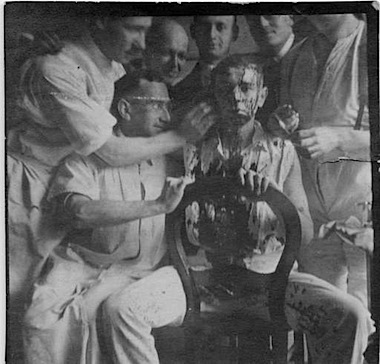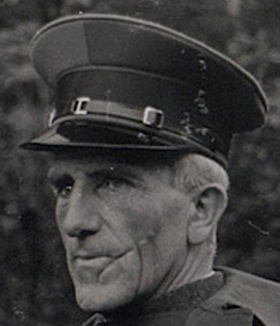
My grandfather, bloodied, at his initiation into a German dueling fraternity. The scar on the cheek (called a « Schmiß ») lasted his lifetime.
When I mentioned to my father how striking I found this photo, he followed up with this email:
« German dueling fraternities in the 1920s were renowned for
being nationalistic and right-wing and, I assume, also
anti-Semitic. I don’t know whether my father was allowed
to join one of those or whether he joined some alternative
Jewish dueling fraternity at that time at Munich University.
Anyway, in his younger days, my father was quite a German
nationalist – participating on the German side when there
were clashes with Polish partisans in his hometown just
after World War I. It was this early activity which the
Nazis were aware of, so that they left him alone longer
than other Jews in Hannover at that time. By February of
1940, just in the nick of time, he got out of Germany
via Holland. By May of that year, Germany occupied Holland.
Anyway, a dueling scar was always considered in Germany
as the mark of the educated elite. »
Qui peut me parler du Schmiss ?

For a student and all of German Society, the badge of courage was the Schmiss (The dueling scar, or sometimes called the Renommierschmiss, or bragging scar), mostly on the left side of the face, where blows would fall from a right-handed duelist. This was borne by a generation of doctors, jurists, professors and officials, certifying the owner’s claim to manly stature. The dueling scar was certain to attract attention because it signified courage and breeding. There are stories that students would resort to self-infliction with a razor. Those who received their Schmiss in this less honorable way would frequently enhance it by pulling the wound apart and irritate it by pouring in wine or sewing horse hair into the gash.
PS: On aura remarqué que je ne suis pas Modiano.